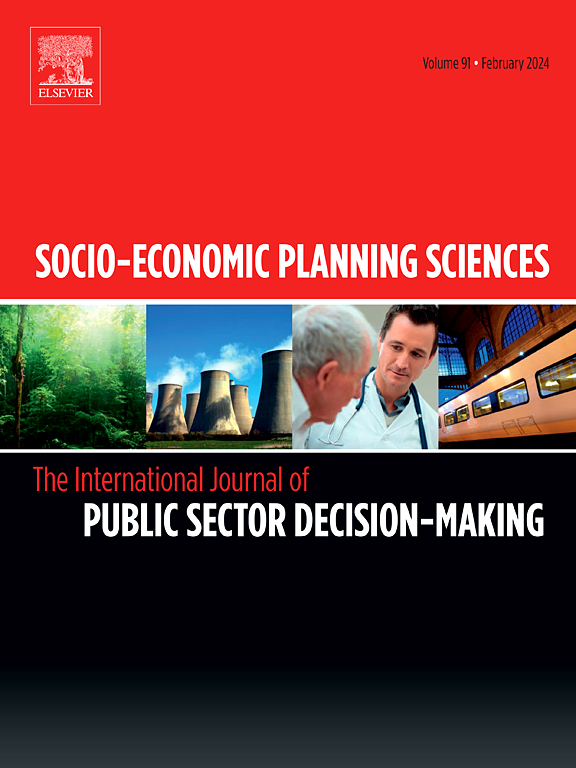A hierarchical facility location-allocation model for sustainable municipal solid waste management in urban cities
IF 5.4
2区 经济学
Q1 ECONOMICS
引用次数: 0
Abstract
Rapid urbanization and population growth has caused municipal solid waste management to be a major challenge for cities worldwide. Thus, local authorities must develop infrastructure to handle increasing waste and reduce pressure on existing facilities. This growth demands multiple facilities for collection, segregation, and treatment. To address this, the study presents a generalized mathematical model for the comprehensive planning of waste management facilities, incorporating a bi-objective approach to manage infrastructure undesirability and the Not-In-My-Backyard (NIMBY) issue. We showcase the model's applicability for real-life scenarios and its validity is demonstrated through a case study of Faridabad, a smart city in India. The application of the proposed model leads to 8–25 % cost savings and offers a quantitative approach for assessing and mitigating undesirability.
城市固体废物可持续管理的分层设施配置模型
快速的城市化和人口增长使城市固体废物管理成为世界各地城市面临的主要挑战。因此,地方当局必须发展基础设施,以处理日益增加的废物,并减轻对现有设施的压力。这种增长需要多个收集、分离和处理设施。为了解决这个问题,该研究提出了一个广义的数学模型,用于废物管理设施的综合规划,其中包括管理基础设施不受欢迎和邻避问题的双目标方法。我们展示了该模型对现实生活场景的适用性,并通过对印度智慧城市法里达巴德的案例研究证明了其有效性。该模型的应用可节省8 - 25%的成本,并为评估和减轻不良影响提供了一种定量方法。
本文章由计算机程序翻译,如有差异,请以英文原文为准。
求助全文
约1分钟内获得全文
求助全文
来源期刊

Socio-economic Planning Sciences
OPERATIONS RESEARCH & MANAGEMENT SCIENCE-
CiteScore
9.40
自引率
13.10%
发文量
294
审稿时长
58 days
期刊介绍:
Studies directed toward the more effective utilization of existing resources, e.g. mathematical programming models of health care delivery systems with relevance to more effective program design; systems analysis of fire outbreaks and its relevance to the location of fire stations; statistical analysis of the efficiency of a developing country economy or industry.
Studies relating to the interaction of various segments of society and technology, e.g. the effects of government health policies on the utilization and design of hospital facilities; the relationship between housing density and the demands on public transportation or other service facilities: patterns and implications of urban development and air or water pollution.
Studies devoted to the anticipations of and response to future needs for social, health and other human services, e.g. the relationship between industrial growth and the development of educational resources in affected areas; investigation of future demands for material and child health resources in a developing country; design of effective recycling in an urban setting.
 求助内容:
求助内容: 应助结果提醒方式:
应助结果提醒方式:


